35 Sexual Differentiation
Sexual differentiation is the process by which a person develops into either a male or a female. For the purpose of this chapter, the content will be based on a male / female binary to introduce the basic concepts of reproductive development. However, it is important to recognize that in real life, chromosomal sex, physical sex, and gender exist on a continuum and cannot always be simplified into a two-structure system.
During development, the body and the brain undergo either A) feminization and de-masculinization or B) masculinization and de-feminization. In most cases, the differentiated brain will lead to behaviors that correspond appropriately to the differentiated gonads.

Chromosomal Sex
In humans, DNA is organized into 46 chromosomes. One set of 23 chromosomes comes from the mother and the other set comes from the father. Twenty-two pairs are called autosomal chromosomes. These chromosome are similar in length and have the same genes present at the same location regardless of if they are received from the mother or father. However, for all genes, the allele, or version, present for each gene may be different from each parent. The last pair of chromosomes is responsible for determining if an individual becomes a male or female; these are called the sex chromosomes. In humans the sex chromosomes are named either X or Y.
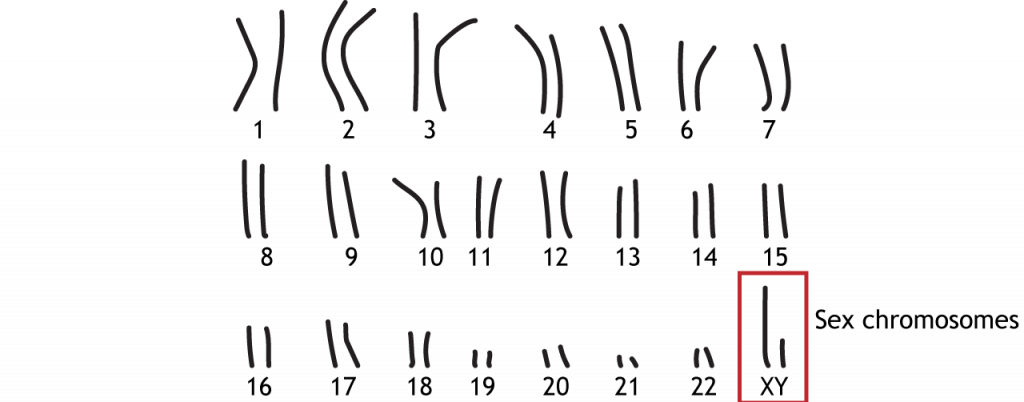
Fertilization occurs when a sperm cell from the father fuses with an egg cell from the mother. All egg cells contain one X sex chromosome. Sperm cells contain either one X or one Y chromosome, which means chromosomal sex in humans is determined by the sperm. If a sperm carrying an X chromosome fertilizes an egg, the resulting fetus will be XX and a female, whereas if a sperm carrying a Y chromosome fertilizes an egg, the resulting fetus will be XY and a male.
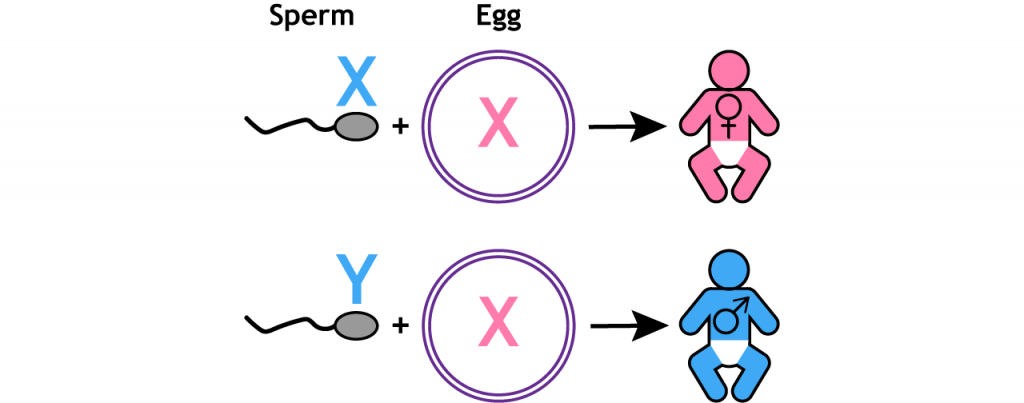
Gonadal Differentiation
On the Y chromosome is a gene called the sex-determining region (SRY) of the Y chromosome. The SRY gene is required for masculinization of the embryonic gonads. The SRY gene encodes for a protein called the testis-determining factor (TDF), which causes the embryonic gonads to differentiate into the testes. The testes then begin secreting both testosterone and a hormone called the Müllerian inhibiting substance (MIS). Testosterone causes Wolffian ducts to develop into the vas deferens, seminal vesicles, and epididymis. MIS causes the Müllerian ducts to degenerate. The presence of testosterone also results in the development of the prostate gland and penis.
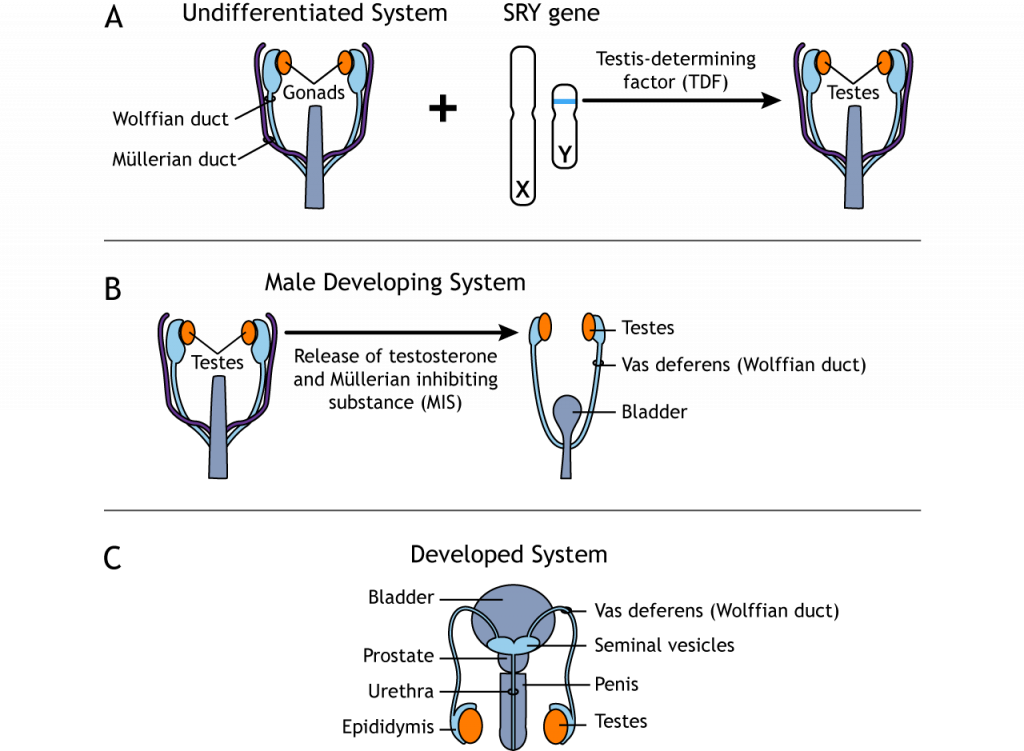
In females, when the SRY gene and secreted hormones are absent, the gonads differentiate into the ovaries, the Müllerian ducts develop into the fallopian tubes, uterus, and vagina, and the Wolffian ducts degenerate.
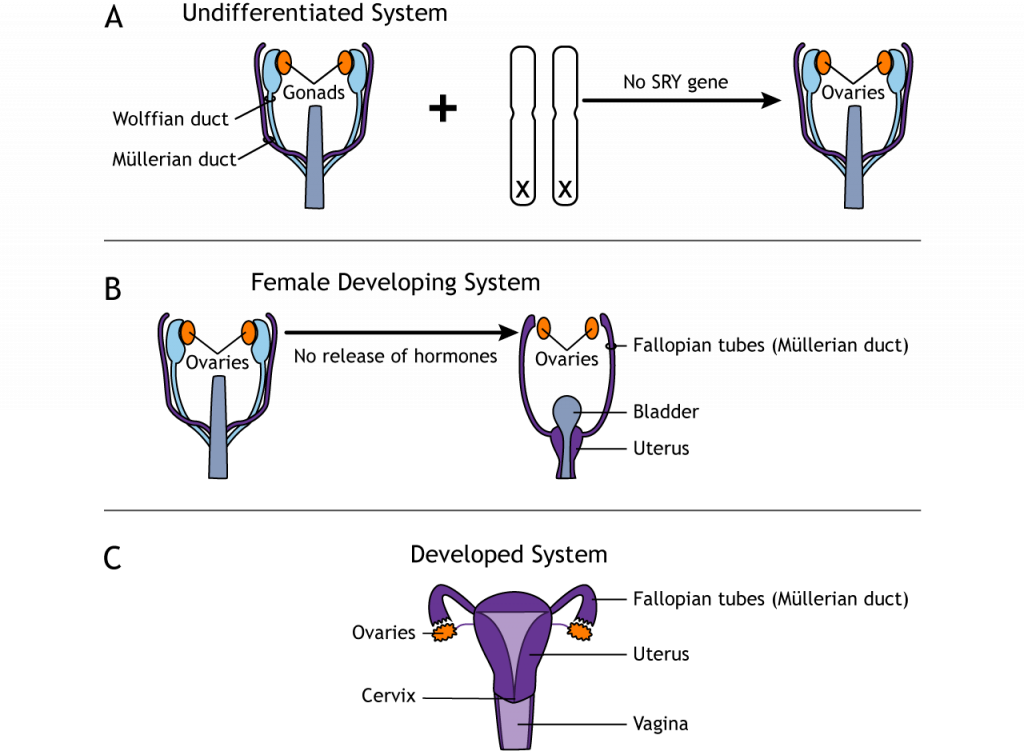
Hormones During Development
In addition to differentiating the reproductive duct system, the presence or absence of gonadal hormones during development also differentiates the rest of the body, including the brain. Testosterone causes the brain, body, and behavior of the individual to be masculinized and defeminized. The quiescent ovaries do not release hormones which causes the brain, body, and behavior of the individual to be feminized and demasculinized.

Critical Period
These hormonal effects of secreted testosterone on the brain must take place during a specific time in development, called a critical period. This early role of testosterone is called an organizational effect and results in a permanent change in the nervous system and therefore behavior. Organizational effects of hormones lead to major, generally irreversible, aspects of cell and tissue differentiation. Organizational effects take place during critical periods like prenatal development and puberty.
In adulthood, the same hormones trigger physiological or behavioral responses like inducing reproductive behavior or ovulation, but these influences, called activational effects, are reversible and short-lived. Removal of the activating hormone will cause the behavior to stop, but replacement later will cause the response to begin again because the brain has previously been organized to produce those behaviors when hormones are present.
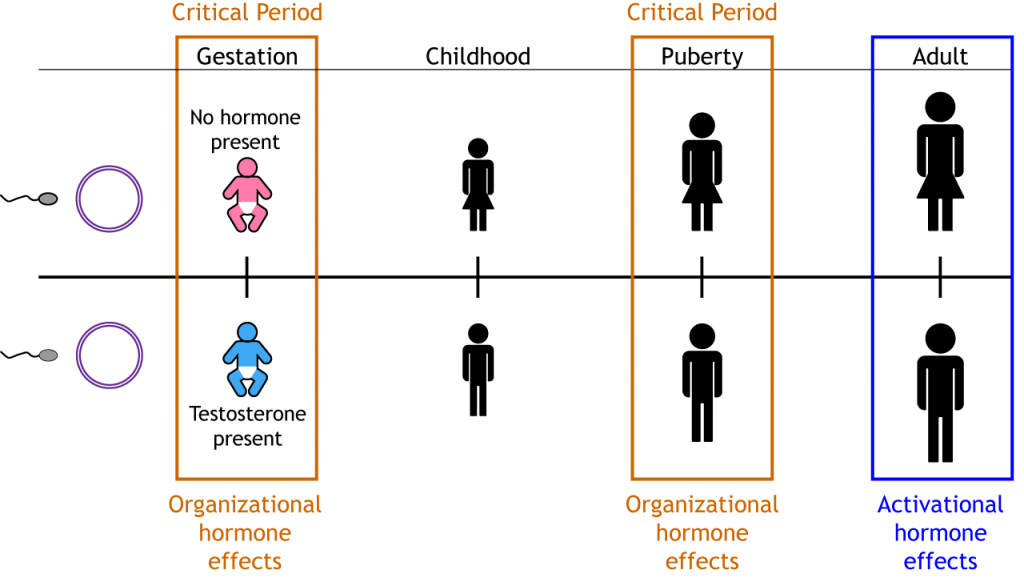
The role of activational hormones can be demonstrated by adult castration in male rats. Healthy males with intact testes will show sexual behavior when placed with a female rat. Castration, the removal of the testes, will cause males to stop showing sexual behavior because the activating hormone, testosterone, is no longer present. However, if the castrated males receive testosterone replacement, they will resume showing sexual behavior. The sexual behavior brain circuit was organized during development by exposure to gonadal hormones, and in adulthood that circuit can be activated by testosterone. The adult behavior can only be seen when the activating hormone is present.
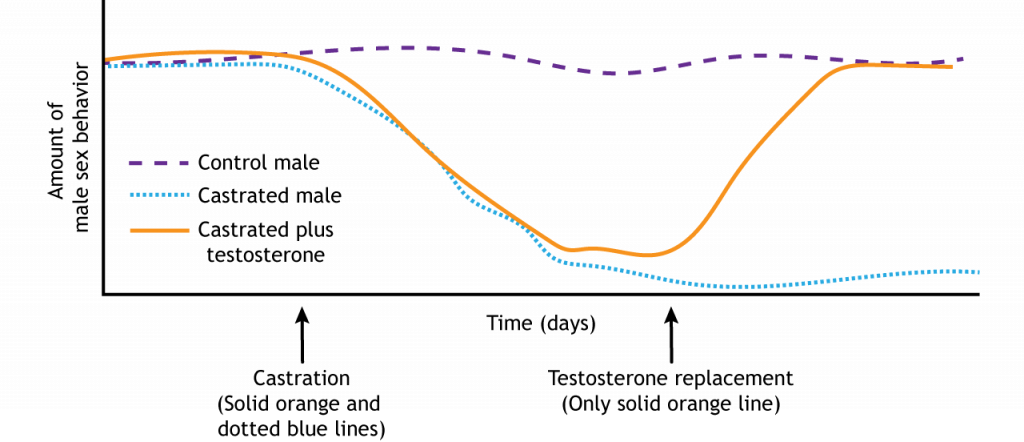
Key Takeaways
- During development, the body and the brain undergo either A) feminization and de-masculinization or B) masculinization and de-feminization
- The sex chromosomes, X and Y, make up one pair of the 23 total pairs of chromosomes in humans
- Females are genetically XX and males are genetically XY
- The SRY gene on the Y chromosome is responsible for the development of the male reproductive system
- In the absence of hormones, the female reproductive system develops
- Organizational, long-lasting hormone effects take place during critical periods in development
- Activational, short-lasting hormone effects “activate” the circuits organized by hormones in development

